Facts About 10 Animals That Can Change Colors
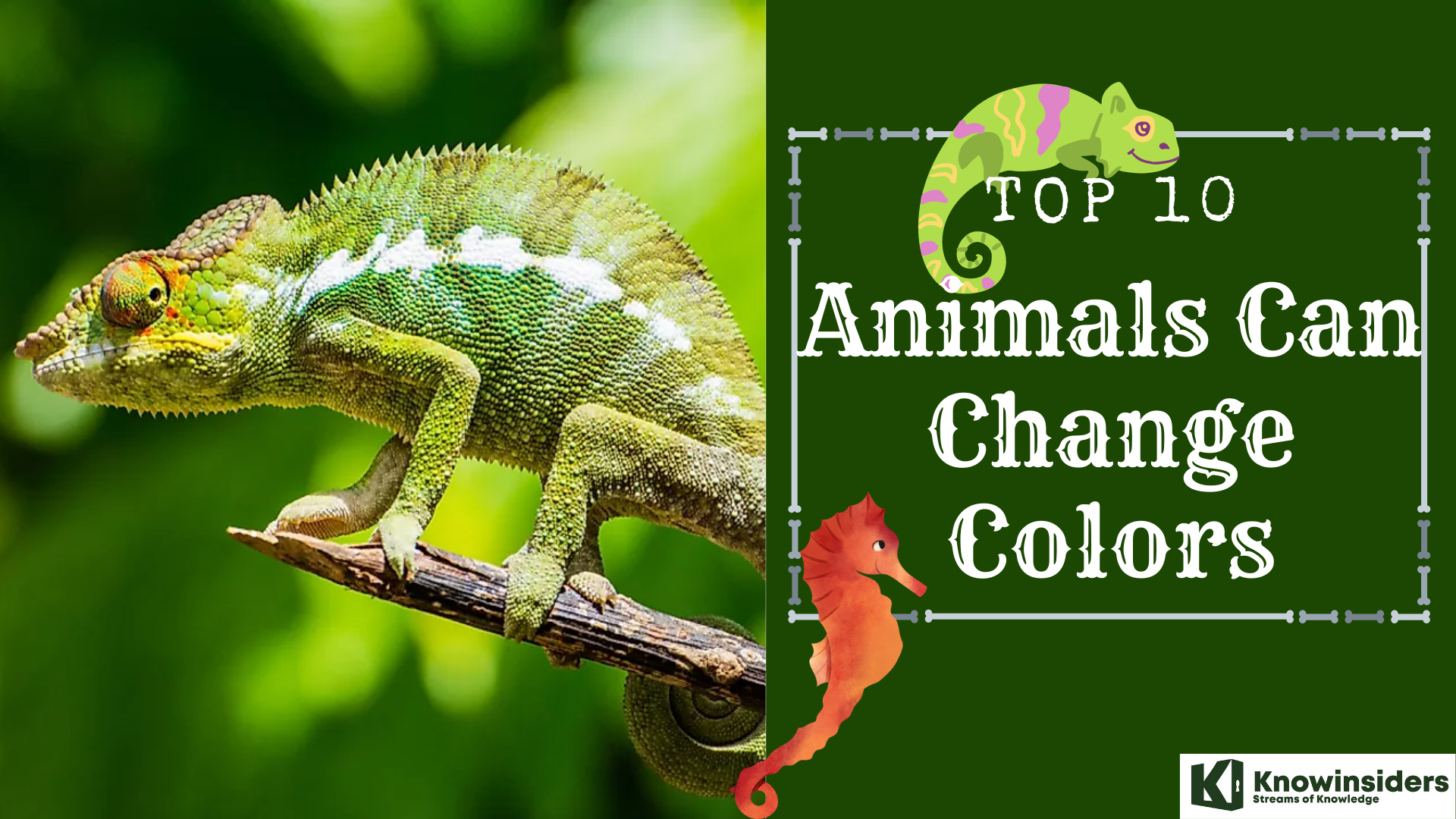 |
| Top 10 animals that can change colors |
There are a few animals that have the unique ability to change colors. The ability to change colors can help animals protect themselves against their predators because it allows them to blend into their natural environment. Here is a list of 10 color changing animals.
Why Do Animals Change Color?
If you don’t have any “tools” to defend yourself, there’s no other option but to hide. Lots of predators have very good eyesight. Some animals have developed unique skills to hide themselves: they change their color to match their surroundings. Some only need a couple of seconds, while others need a few hours or days.
The key is: “color cells”. Or chromatophores if you want to use the proper scientific term. These cells are found in the animals’ skin or organs. We don’t want to get too complicated but there are a couple of terms you’ll need to know:
• Xanthophores and erythrophores: responsible for yellow and red colors
• Guanophores: contain crystals that reflect light; they look white and silvery
• Melanocytes: cells that look red-brown to black
These animals can use their muscles to make these cells bigger or smaller. Colors are “mixed” in the skin.
The list of top 10 animals that can change colors
10. Chameleon
9. Golden Tortoise Beetle
8. Mimic Octopus
7. Pacific Tree Frog
6. Seahorses
5. Flounders
4. Cuttlefish
3. Crab Spiders
2. Squid
1. Cyanea Octopus
What are the animals that can change colors?
10. Chameleon
 |
| Photo: Shutterstock |
chameleon, (family Chamaeleonidae), any of a group of primarily arboreal (tree-dwelling) Old World lizards best known for their ability to change body colour. Other characteristics of chameleons include zygodactylous feet (with toes fused into opposed bundles of two and three), acrodont dentition (with the teeth attached to the edge of the jaw), eyes that move independently, atrophied venom glands that produce harmless trace amounts of venom, and a long, slender projectile tongue. The name has also been applied to the false chameleon, or anole, a New World lizard of the genus Anolis (family Iguanidae).
The longest chameleon in the world is Parson’s chameleon (Calumma parsonii), which may grow up to 69.5 cm (about 27 inches) long. On the other hand, the world’s shortest chameleon, the male nano-chameleon (Brookesia nana), can be as small as 21.6 mm (about 0.9 inch) long. Most chameleons, however, are 17–25 cm (7–10 inches) long. The body is laterally compressed, the tail is sometimes curled, and the bulged eyes move independently of one another. Also, some chameleons possess helmet-shaped heads.
The chameleon is fascinating: it has eyes that can move independently of one another and a long sticky slingshot of a tongue, and it can change color. It’s true that most animals that change their color do so to hide from predators. But the chameleon is different. It uses color to show others how it feels. It can turn black if upset (if it falls over) or very pale when sick.
9. Golden Tortoise Beetle
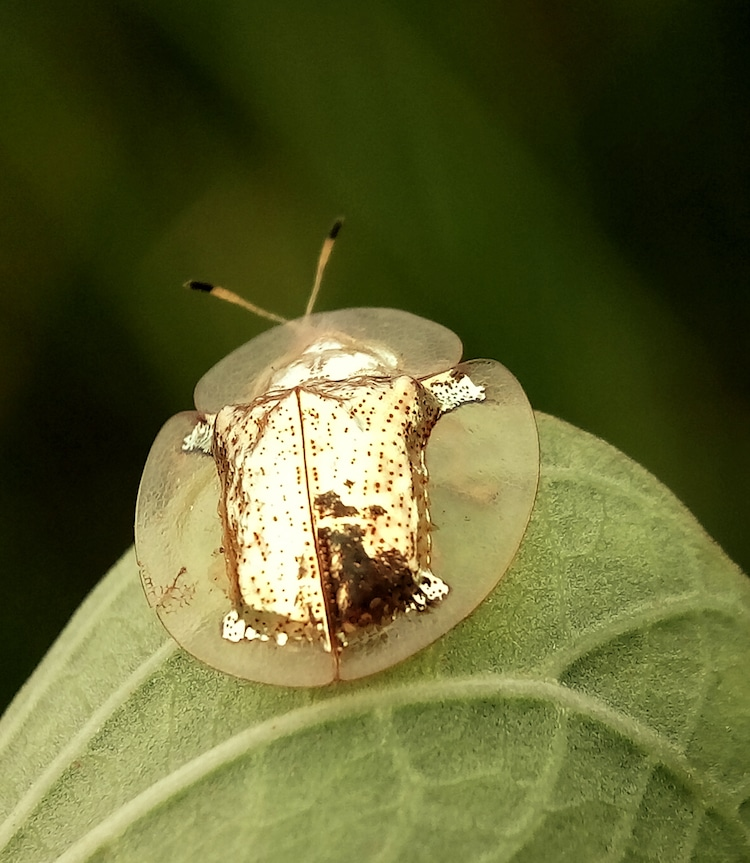 |
| Photo: My Modern Met |
A “gold bug” or “golden lady bug” are common descriptions of someone first seeing one of the golden colored tortoise beetles. They have a generally rounded body form and a similar size to some common lady beetles (about 5-6 mm length). Their body is domed, with somewhat flatter areas along the edges, somewhat resembling a safari hat. When disturbed they can press themselves close to the leaf surface with all appendages safely protected underneath, somewhat in the manner a tortoise can withdraw into its shell.
It is the coloration that is so striking and these beetles may be a brilliant gold. The golden tortoise beetle may be nearly uniformly gold, whereas some darker markings are always present on the mottled tortoise beetle. However, the color also varies with both species and the same insect may later appear more bronzed or even reddish with spots. The golden color is lost when the insect dies.
The golden tortoise beetle is an insect that can change its color. The species with this ability include Charidotella sexpunctata and Charidotella egregia. The tortoise beetles change color due to particular events that occur in their environment. Such events include meeting a willing mate and being touched by a curious human being. Hence, when they are mating or agitated, the tortoise beetles change their color from gold to a bright red color. The change of color occurs due to a process referred to as optical illusion.
8. Mimic Octopus
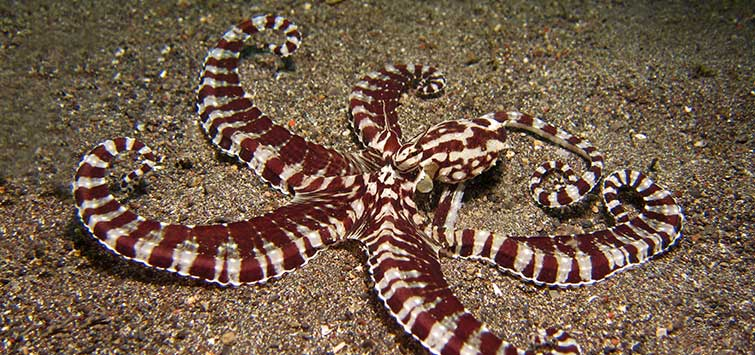 |
| Photo: TFH Magazine |
The “mimicking miracle octopus” earns its weighty name. This new-to-science cephalopod, found in shallow waters of the Indo-Pacific, is a master impersonator, taking on the appearance and behavior of venomous or bad-tasting creatures to foil would-be predators.
What’s most unusual is the range of the mimic octopus’s repertoire: Most animal mimics impersonate just one animal—the mimic octopus impersonates several, and can switch between them rapidly.
Like other mimics, the octopus changes its coloring to disguise itself. More unusually, it can also contort its body to take on the appearance and behavior of several animals, including the lionfish, jellyfish, sea snake, a shrimp, a crab, and others.
To mimic the sea snake, for example, the octopus tucks into a hole, sticking just two arms out (that display black bands) and rippling them in opposite directions, mimicking a snake’s movement. Even more remarkably, the cephalopod only takes the form of a sea snake when bothered by damselfish—who are preyed on by sea snakes.
 Top 10 Most Beautiful Animals in the World Top 10 Most Beautiful Animals in the World All animals living on earth are beautiful. The diversity on our planet is practically endless with different sizes, shapes, characteristics and colours. Here is 10 ... |
7. Pacific Tree Frog
 |
| Photo: California Herps |
The Pacific Treefrog is a small frog that reaches a maximum length of about 5 cm, with males being slightly smaller than females. The dorsal colouration is highly variably and can change based on temperature, light and substrate colour. Individuals are often varying shades of brown, tan or green, although some red, bronze and black colour morphs can occur. Pacific Treefrogs have a dark stripe that extends from the snout through the eye to the shoulder, distinct circular toe pads, and granular skin. Individuals may have a dark y or v-shaped marking between the eyes and dark blotches or stripes on the back and legs, although some or all of these markings may be absent. The belly is whitish or pale yellow, and the throat of males is light brown. Larvae (tadpoles) have long tails with a large fin, lack front legs (newly hatched tadpoles are legless), and are greenish-grey to brown, sometimes with gold flecking. Larvae can reach lengths of 5 cm before metamorphosis. The call of this species is the classic “ribbit” sound.
6. Seahorses
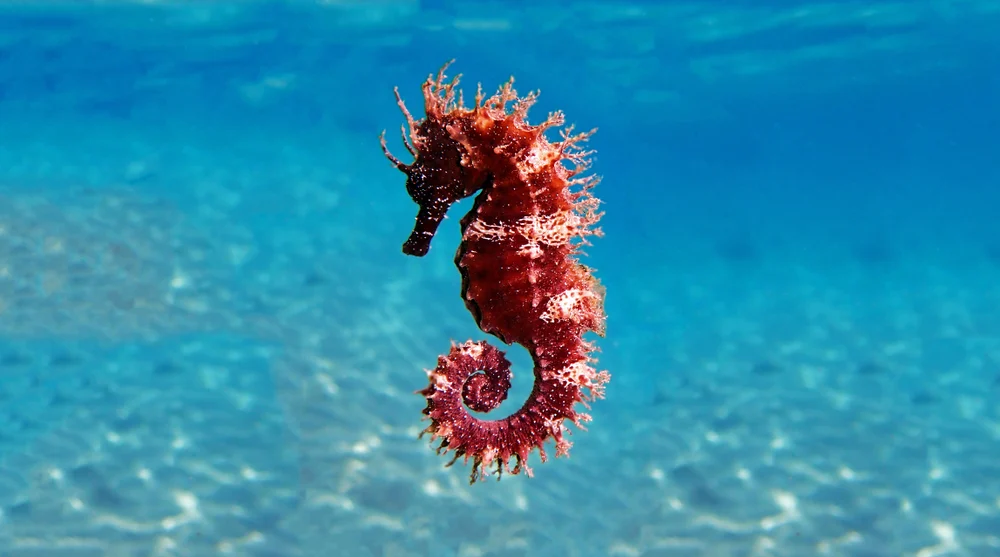 |
| Photo: Getty Images |
Seahorses are truly unique, and not just because of their unusual equine shape. Unlike most other fish, they are monogamous and mate for life. Rarer still, they are among the only animal species on Earth in which the male bears the unborn young.
Found in shallow tropical and temperate waters throughout the world, these upright-swimming relatives of the pipefish can range in size from 0.6 inches to 14 inches long.
Seahorses, such as the thorny seahorse, are among the marine animals that have mastered changing their color. The purpose of changing their skin color is to camouflage, frighten predators, communicate their emotions, and for courtship. Complex interactions between the brain, nervous system, hormones, and organelles make it possible for the seahorses to change their color. The organelles responsible for these color changes are known as chromatophores. Regarding the speed at which the skin color changes, this depends on the stimulus. For instance, in a life or death situation such as involving a predator, the color changes quickly. But whenever the seahorse is courting a mate, the change takes place slowly.
5. Flounders
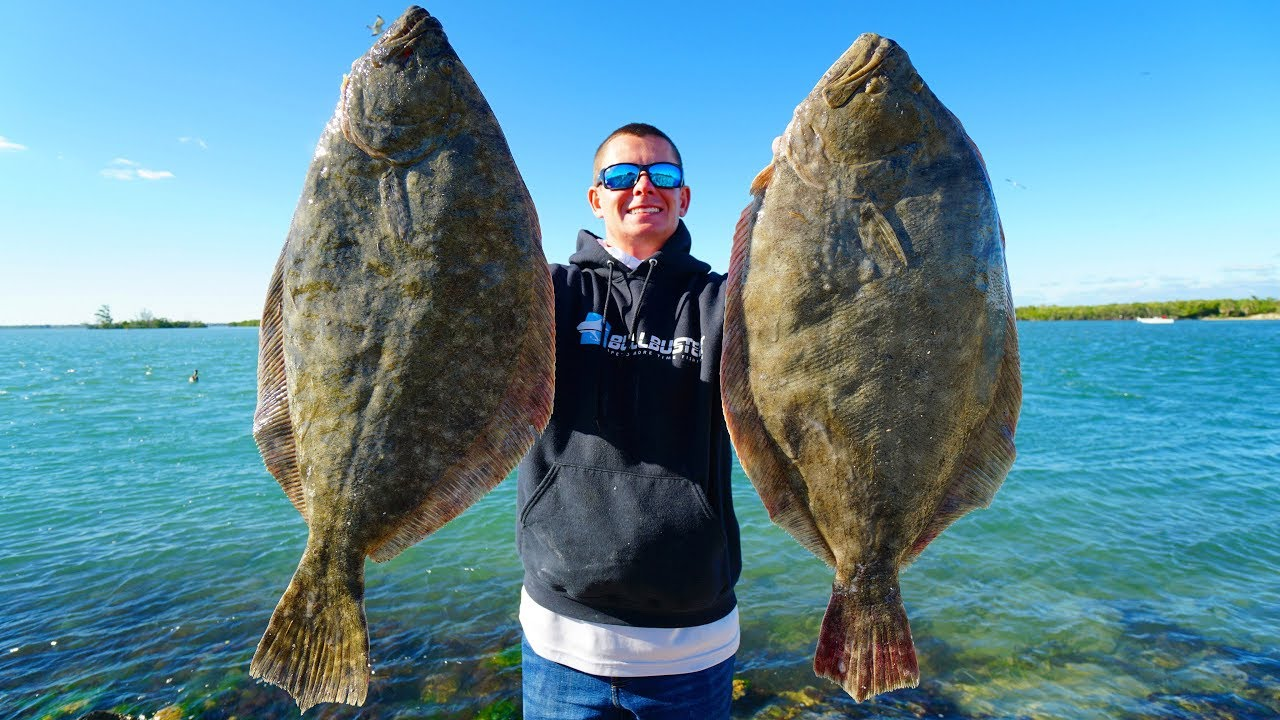 |
| Photo: MedPharmRes |
Flounder, any of numerous species of flatfishes belonging to the families Achiropsettidae, Pleuronectidae, Paralichthyidae, and Bothidae (order Pleuronectiformes). The flounder is morphogenetically unusual. When born it is bilaterally symmetrical, with an eye on each side, and it swims near the surface of the sea. After a few days, however, it begins to lean to one side, and the eye on that side begins to migrate to what eventually becomes the top side of the fish. With this development a number of other complex changes in bones, nerves, and muscles occur, and the underside of the flounder loses its colour. As an adult the fish lives on the bottom, with the eyed side uppermost.
Flounders are naturally brown. However, they can change color to suit their surroundings. A flounder uses its vision and specialized cells inside the skin to change color. The cells, in turn, have color pigments and are linked to the eyes of the flounders. When a flounder moves to a new environment, the retina in the eyes captures the new color. Consequently, the color seen by the eyes are transmitted to the cells. The cells adjust the pigmentation to match the surface color. Scientists have discovered that flounders depend entirely on their vision to change color. When their eyes are damaged, then they have difficulties in camouflaging to their surrounding. An example of flounder species that changes color is the peacock flounder.
4. Cuttlefish
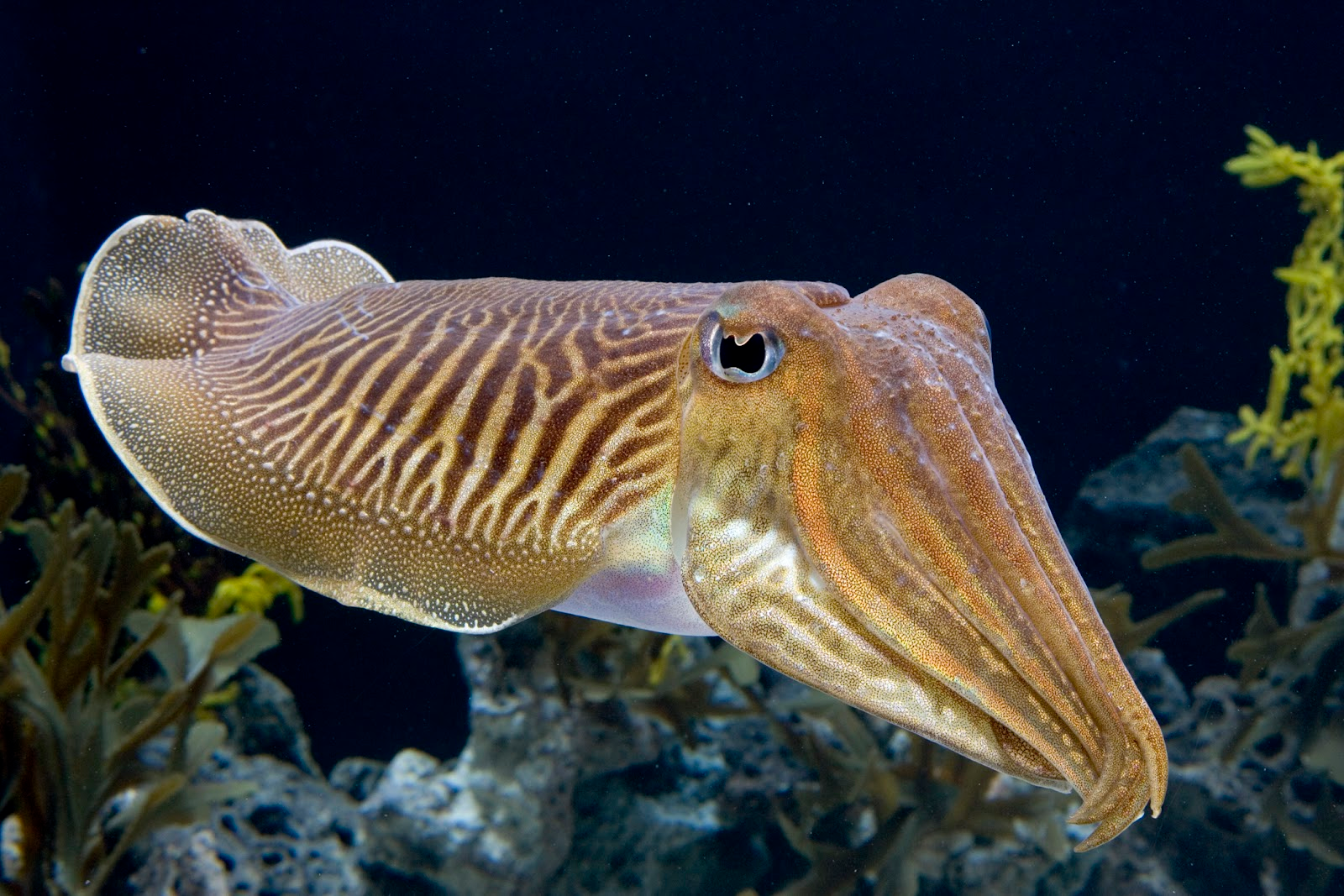 |
| Photo: Pinterest |
Cuttlefish are related to squids and octopuses – a group of molluscs known as cephalopods. You may have seen the chalky internal shell, called a cuttlebone washed up on beaches around the UK. These are often used in budgie cages, as a calcium-rich dietary supplement for the bird.
Common cuttlefish are the largest found in UK seas and a fierce predator. They make light work of crabs, fish and even small cuttlefish! They live in water up to 200 metres deep but come to shallow waters to breed in spring. Their eggs are dyed black with cuttlefish ink, which gives them the appearance of grapes – giving them their name ‘sea grapes’. Cuttlefish usually live for two years and die after they have bred.
Cuttlefish are a chunky squid-like creature with a well-developed head, large eyes and mouths with beak-like jaws. They have a fin that runs around their body, eight 'arms' with suckers plus two tentacles around the mouth. Cuttlefish are extremely variable in colour, but are usually blackish-brown, mottled or striped. The cuttlebones found washed ashore are white, chalky and oval-shaped with thin harder 'wings' at one end.
Cuttlefish are cephalopods that change color to feed on prey and avoid predators craftily. They have three mechanisms by which they can change color. Firstly, the cuttlefish skin contains papillae that alter the tone of the fish. The papillae cause the skin to become smooth or rough depending on the environment. Secondly, camouflaging is possible because of the chromatophores in their skin. The chromatophores are sacs of color pigments. To change color, these sacs receive color-changing instructions from the brain and act accordingly. Lastly, cuttlefish have reflecting plates called leucophores and iridophores. The plates enable the fish to change its color.
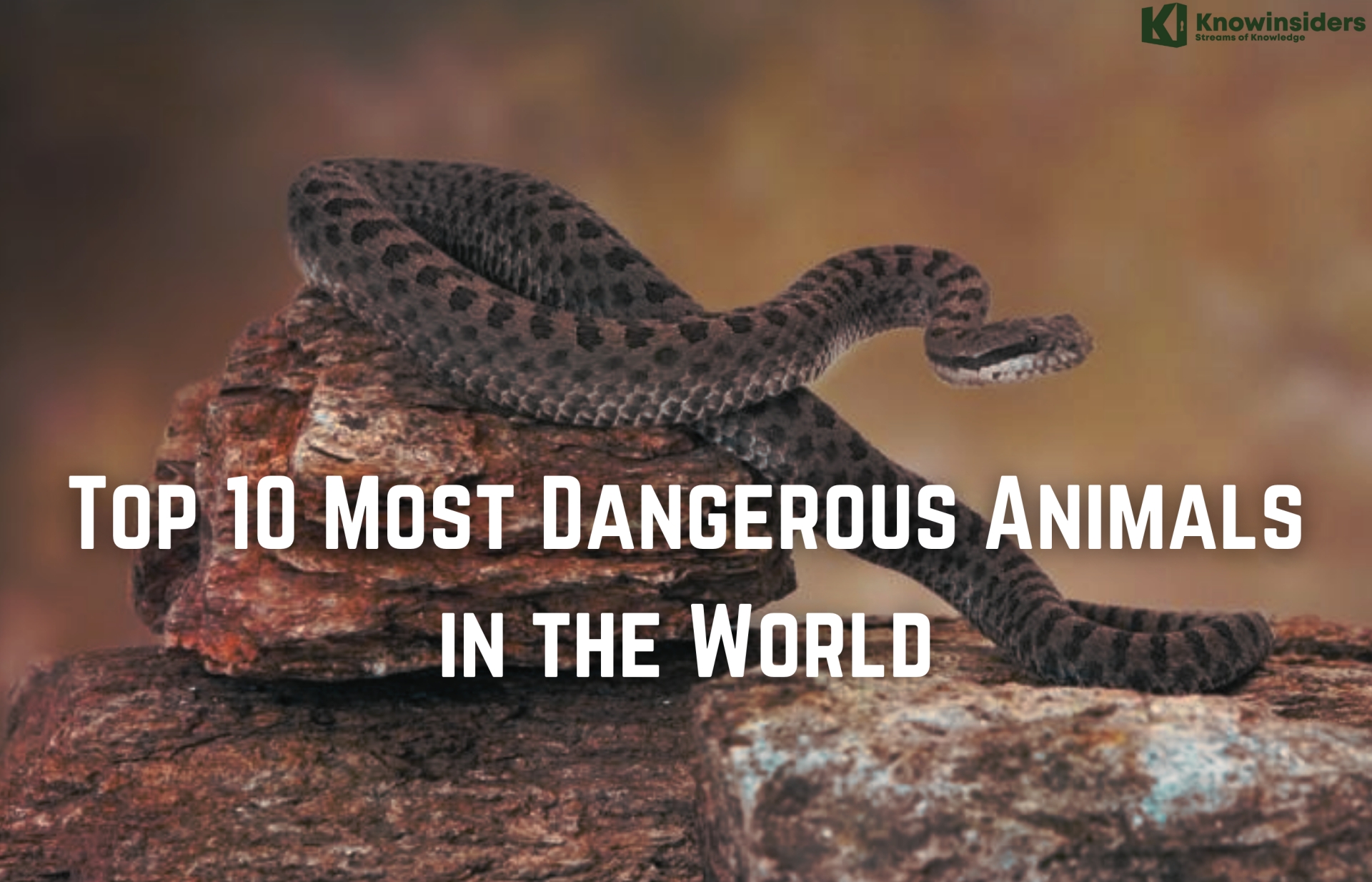 Top 10 Most Dangerous Animals in the World Top 10 Most Dangerous Animals in the World Although Hollywood films suggest our greatest threats include sharks and rampaging apes, the deadliest creatures are often much smaller – and more likely to kill ... |
3. Crab Spiders
 |
| Photo: Mdc. mo. gov |
Crab spider, (family Thomisidae), family of spiders (order Araneida) that are crablike in shape and, like many crabs, often walk sideways or backward. The family, which is worldwide in distribution, contains many common species that live on the soil surface, in leaf litter, or under bark. About 125 species occur in the United States.
The body of most crab spiders is gray or brown in colour and is about 12 mm (0.5 inch) long. They do not spin a web but instead wait in hiding for prey. Members of Misumena and Misumenoides, common North American genera, are found chiefly in open spaces, on plants, or on fences. Misumena vatia, found on flowers, is white or yellow with a red stripe on the side of the abdomen. Over a period of several days it can change colour to match that of the flower on which it rests.
They usually change color to hide from their prey. Consequently, the spiders change color to resemble the flower surface on which they sit through the reflection of light. Some spiders release a yellow pigment that enhances their color changing process. An example of a species of spider with such color changing features is Misumenoides formosipes and Misumena vatia. The color change from white to yellow takes 10-25 days. Hence, the flower spiders patiently wait for the completion of the process before they can attack their prey.
2. Squid
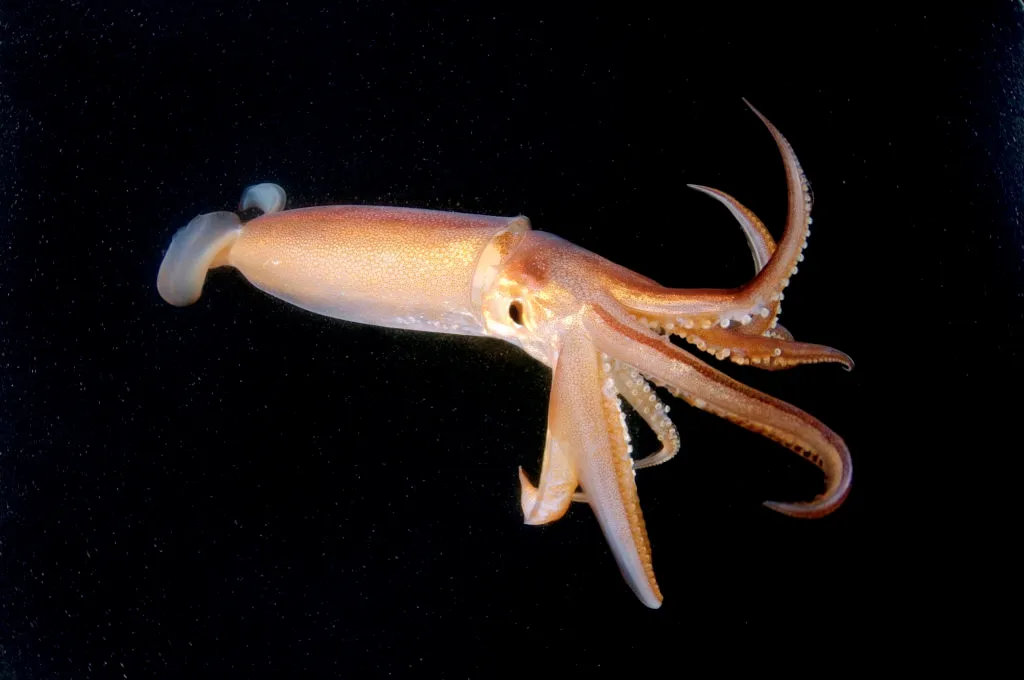 |
| Photo: Getty Images |
squid, any of more than 300 species of 10-armed cephalopods classified within the order Teuthoidea (or Teuthida) and found in both coastal and oceanic waters. Squids may be swift swimmers or part of the drifting sea life (plankton).
Squids have elongated tubular bodies and short compact heads. Two of the 10 arms have developed into long slender tentacles with expanded ends and four rows of suckers with toothed, horny rings. The body of most squids is strengthened by a feathery-shaped internal shell composed of a horny material. Squid eyes, almost as complex as human eyes, are usually set into the sides of the head.
Squids are marine cephalopods. They possess two long tentacles and eight arms. An interesting fact about the squids is that their blood is blue. Furthermore, they have three hearts instead of one like other fish. The squids are uniquely beautiful and able to change color. They change color using chromatophores engraved in their skin. The purpose of changing color is to match the surface they are on so that they can avoid predators. The camouflage also acts as a hunting tactic since it enables them to hide away from their prey.
1. Cyanea Octopus
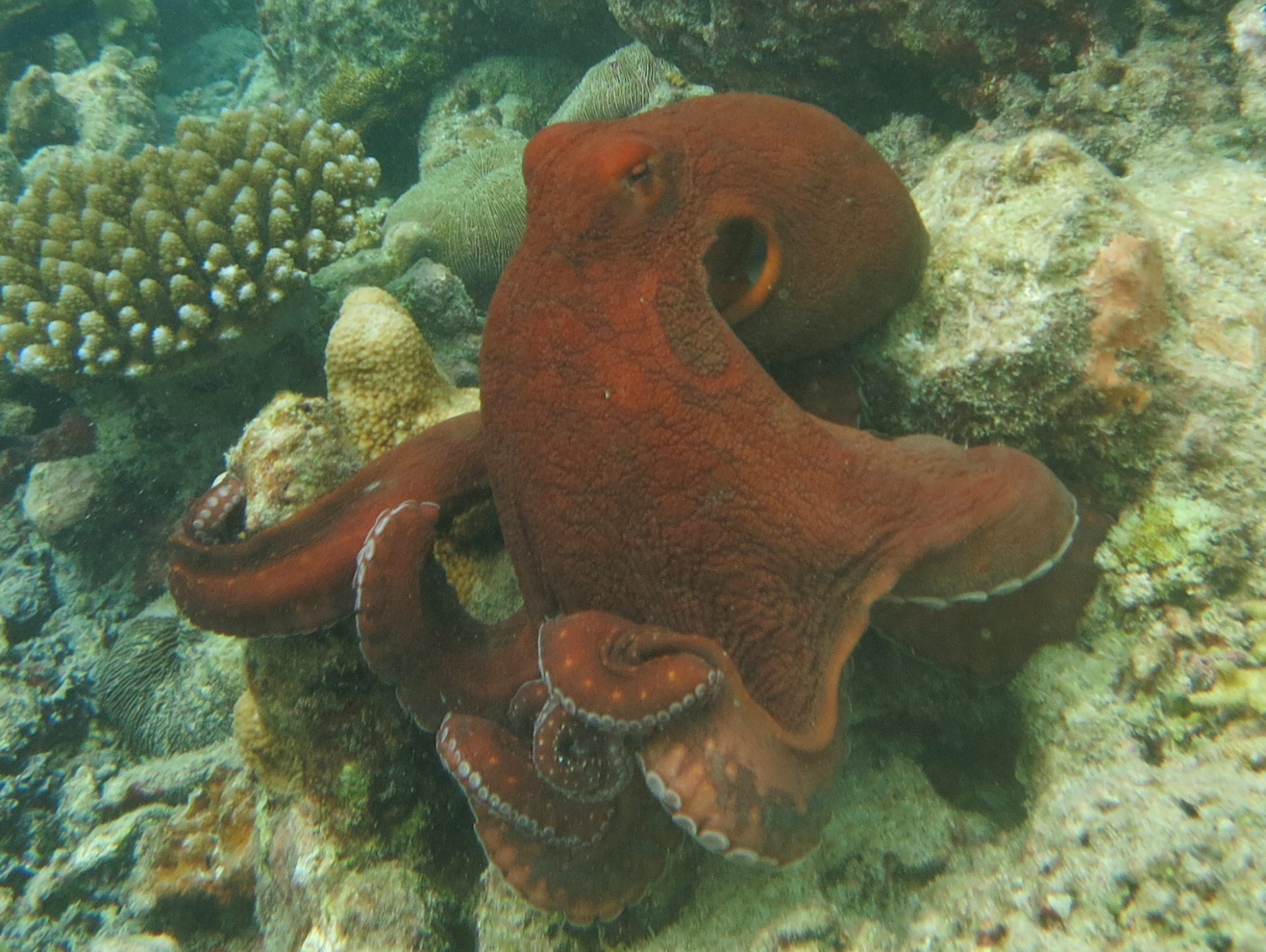 |
| Photo: Wikipedia |
Octopus cyanea, also known as the big blue octopus or day octopus, is an octopus in the family Octopodidae. It occurs in both the Pacific and Indian Oceans, from Hawaii to the eastern coast of Africa. O. cyanea grows to 16 cm in mantle length with arms to at least 80 cm. This octopus was described initially by the British zoologist John Edward Gray in 1849; the type specimen was collected off Australia and is at the Natural History Museum in London.
Known as the big blue octopus or the day octopus, octopus cyabea is found in the waters of the Indo-Pacific. It is known as the day octopus as it is most active during the daytime in contrast to most other octopus species. The cyanea octopus is especially adept at camouflage, able to not only frequently change the color of their skin, but also recreate patterns and textures. On the hunt for crabs, molluscs, shrimp, and fish, the cyanea octopus is able to quickly adapt its appearance to its surroundings, even mimicking moving shadows such as overhead clouds.
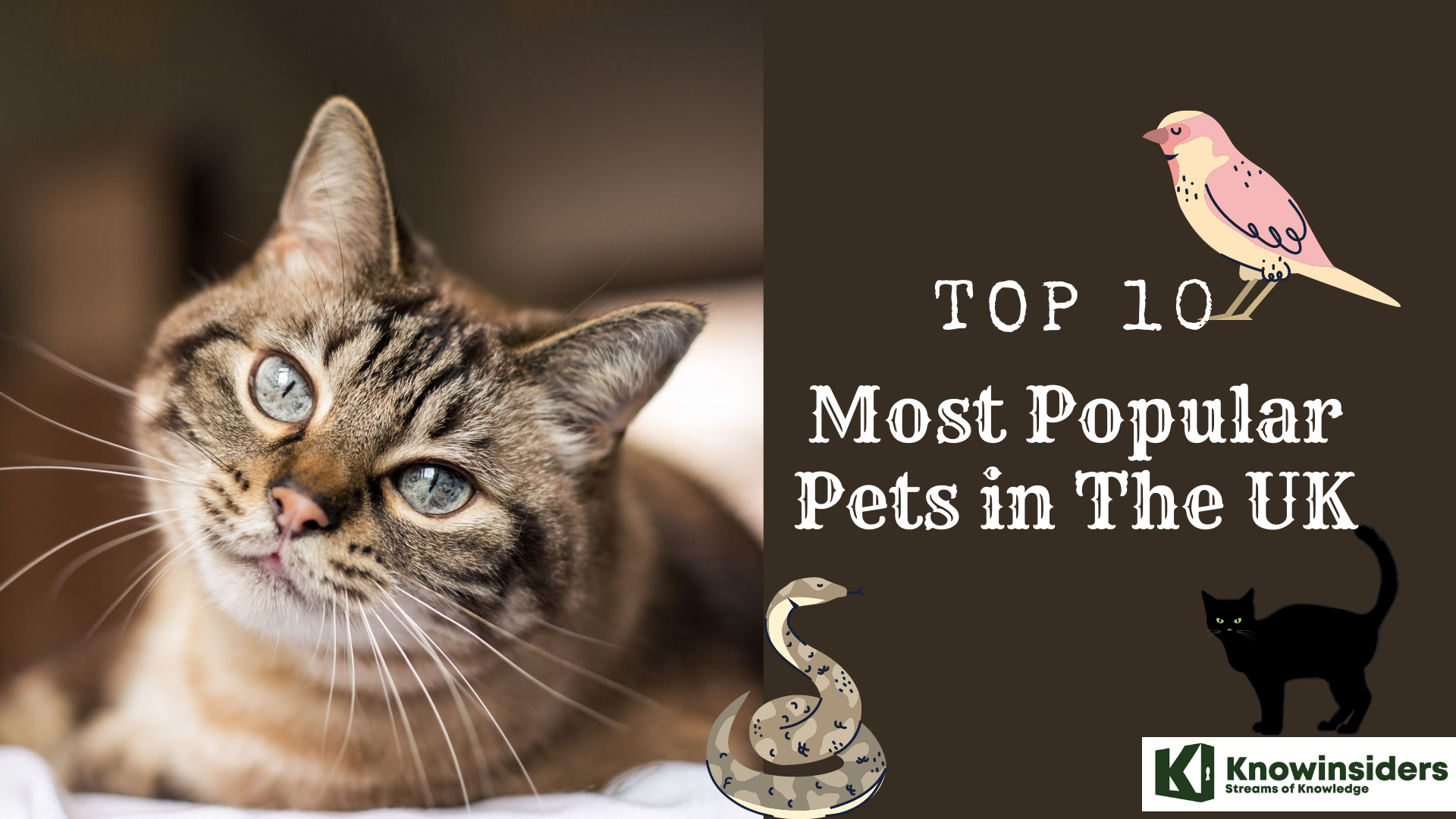 Top 10 Most Popular Pets In the UK Top 10 Most Popular Pets In the UK Keep reading the article below for top 10 most popular and loved pets in the UK. |
 Top 10 Most Popular Pets in Australia Top 10 Most Popular Pets in Australia To know more about 10 best popular pets in Australia, keep reading the article below. |
 Top 10 Most Popular Pets In The United States Top 10 Most Popular Pets In The United States Pets are the best companions of the Americans, and there are many different type of pets, from big to small. Keep reading to know more ... |
 Top 10 Most Popular Pets In The World Top 10 Most Popular Pets In The World Pets are human's best companions, and are globally loved and kept in household. Here is the 10 most popular pets in the world. |























